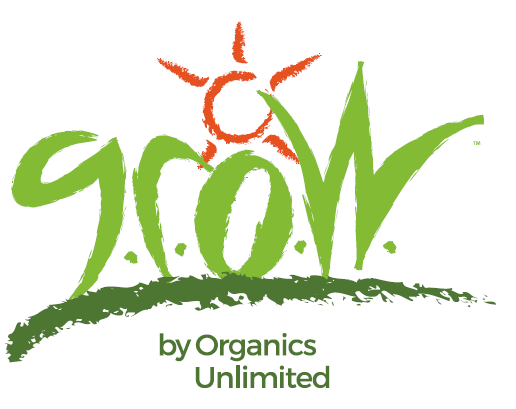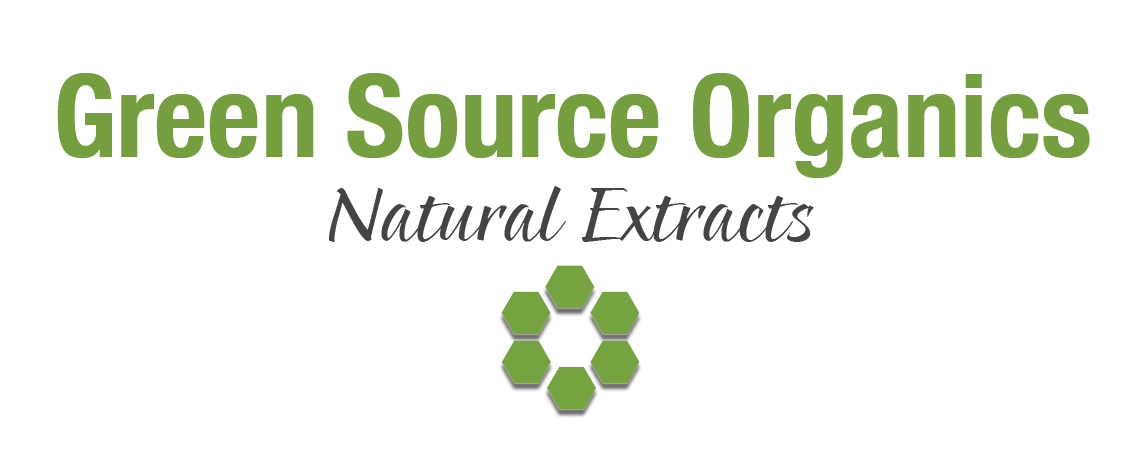The organic produce category experienced strong performance during the past year, increasing in both dollar and volume sales compared to the previous year.
Dollar sales reached nearly $11.7 billion, up 8.5% from the year prior, while volume sales for organic produce grew 5.6% to 4.1 billion pounds, according to Circana OmniMarket Integrated Fresh data for the 52 weeks ending April 20, 2025, including total U.S. Multi-Outlet+ with C-store (grocery, drug, mass market, military, convenience and select club, dollar, beauty and online retailers).
In comparison, dollar sales for conventionally grown produce grew 3.4% and sales by volume gained 3.6%.
“Growth is always good, but growth of a premium-priced option is always remarkable,” said Jonna Parker, head of the Fresh Foods Client Insights Group for Circana, a Chicago-based market research firm. This is especially true, she added, at a time when consumers are watching their budgets.
Parker highlighted multiple drivers for organic’s successful year, including a trend toward healthy eating and snacking, adoption by younger consumers and shoppers’ view of organic produce as an affordable luxury.
“On average, people spend the least in the produce department when they buy an item compared to any other part of the store,” she said.
With shoppers making multiple trips to buy groceries each week and picking up just what they need, “fresh produce and premiumizing their fresh produce choices becomes so much more relevant,” Parker added.
Brian Penfield, produce director for Sendik’s Food Market in Milwaukee, confirmed that demand for organic produce is growing.
“For us, it’s anywhere from a 3% to 5% increase each week versus last year,” he said. “Consumers are looking for the product, and we find ourselves offering more selection and variety each year.”
Aldi stores experienced double-digit increases in organic produce sales in 2024, up more than 20% year-over-year. Fruit had a 30% increase, while vegetables sales grew 10%.
“It’s one of the fastest-growing categories in our business, outpacing total produce growth,” said Bill Duesenberg, director of national produce buying for Aldi. “Shoppers are looking for a fresh, value-packed produce aisle, and that’s why we’re continuing to expand our assortment around what shoppers are craving most.”
The Wellness Factor
The Packer’s Fresh Trends 2025 consumer survey found that while health was a primary motivator for all respondents, 87% of those using GLP-1 medications such as Ozempic cited health as a reason to eat more fruits and vegetables.
Parker identified the movement toward healthy eating as one of the “mega-trends” driving organic produce sales over the past year.
“When we look at the key motivations of the organic consumer, No. 1 is healthy nutrition,” she said. “It’s very much about fueling your wellness goals.”
Younger Generations Lead the Way
Among consumers surveyed for Fresh Trends, younger generations — Gen Z and millennials — reported the most sensitivity to food inflation. Despite their budgetary concerns, Gen Z and millennial shoppers more frequently reported buying organic produce than older generations; 1 in 3 millennials said that the majority of their produce purchases in the past year were organic.
Younger generations also reported more willingness to pay a higher price for organic produce. The survey showed 17% of Gen Z and 14% of millennials indicated they would be willing to pay 25% to 49% more for organic offerings, compared with just 3% of Gen X and 7% of baby boomers. In contrast, roughly 1 in 5 Gen Xers and baby boomers said they are not willing to pay extra for organic.
If price were not an issue, 59% of millennials said they would buy more organic produce, followed by Gen Z at 57%.
Parker said that, for Gen Z and millennials, the decision of whether or not to buy organic produce isn’t primarily based on cost. For them, it’s more of an affordable luxury.
“Though there is a large segment of organic buyers that is more affluent, organic does very well with younger consumers,” she said. “Just like younger people may buy designer handbags or upgrade the type of hair care they are using if it is recommended by a beauty influencer, having a more premium organic option for produce is interesting and relevant. It is not all about price with the younger — or really, any — consumer.”
These discerning and empowered shoppers grew up with infinite choices, she added, and organic produce has always been widely available during their lifetimes. They are also more likely than older generations to research the food they purchase and eat, Parker said, including how it’s grown and the benefits it provides — such as aligning with their wellness goals or caring for the planet.
“What organic brings is this transparency of trust,” Parker said. “They want authenticity and storytelling, and they want to feel good about what they’re buying.”
Berries Are Boss
Organic fruit outperformed its conventionally grown counterpart, according to Circana, growing 8.6% in dollar sales and 9.5% in volume. In comparison, conventional fruit sales increased 5.6% in dollar sales and 4.7% in volume.
Fresh vegetables saw modest gains in both the organic and conventional categories. Dollar sales for organic vegetables grew 2.6% and volume sales increased 1.2%. For conventional items, dollar sales grew 1.1% and volume sales increased 2.2%.
“Historically, people are not as interested [in organic] if they don’t eat the peel,” Parker said. “While there are healthy sales in organic avocados, citrus and bananas, when you talk to consumers who are extremely organically inclined, they tend to view organic as a nice-to-have for those items.”
Another reason for fruit’s dominance in the organic category, she said, is the trend of healthy snacking. Consumers are eating more snacks throughout the day rather than having big meals, she said, and “fruit is imminently snackable.”
In addition, people are increasingly leaning toward fruit-topped breakfast options such as Greek yogurt and acai bowls, Parker said. Fresh fruit — and even better if it’s organic — aligns with consumers’ desire to make healthy choices based on wellness goals.
Among fruit commodities, organic berries were consumers’ No. 1 choice during the 52-week period ending April 20, 2025. Circana data shows they were the top sellers in dollar sales, up 7.5% over the prior year to $2.1 billion. Strawberries were the bestselling berry variety, up 6.9% in dollar sales, followed by blueberries and raspberries.
Apples took second place at $912 million (up 2.4%), followed by bananas at $697 million (up 14.9%). Organic bananas took the lead in volume sales (up 16.3% over the previous year to 978 million pounds), while apples and berries ranked second and third.
At Aldi, Duesenberg said stores experienced major gains in 2024 for bananas.
“Shoppers took home 43 million pounds of organic bananas,” he said. Organic berries and avocados were the category’s rising stars, he added, with a growth rate of more than 40% year over year.
“Berries will always be the juggernaut,” Parker said. She recommends that retailers take advantage of their popularity by offering more package sizes in organic and by expanding their offerings beyond the three most popular varieties to satisfy the organic consumer’s desire for exploration.
Consumers are also interested in trying new varieties of organic grapes, she said. Fueled by social media posts that show influencers coating grapes in Jell-O powder or chocolate and then freezing them, the category saw strong sales growth during the last year. Dollar sales increased nearly 18% and volume sales jumped 23%.
Likewise, dollar sales for mangoes increased nearly 31% and volume sales grew 34%.
“We’ve watched dried mangoes and mangoes as ingredients grow, especially among younger consumers,” Parker said. “I’m not surprised that mangoes are having a tremendous 2025.”
Cucumbers Are Having a Moment
In the organic vegetable category, the salads and leafy greens category tallied $2.2 billion in sales. Dollar sales declined 1.8% and volume sales dipped 2.5% compared with the previous year. Spinach was a top seller at $595 million in dollar sales, along with carrots at $546 million. Carrots, salads and leafy greens, and potatoes topped volume sales.
“The softness in organic lettuce and salads is a concerning trend to me,” Parker said.
One reason for the decline, she explained, is that consumers are experiencing “salad fatigue” and are looking for alternatives to traditional, greens-based salads. Spurred by viral social media posts that present creative ways to make salads without lettuce, cucumbers are having a moment, she said.
Circana data shows that dollar sales for organic cucumbers grew more than 15% during the 52-week period ending April 20, and volume sales increased 9.6%.
“Social media influencers have helped consumers see a variety of items in new ways,” Parker said. “Showing people how they can take affordable, simple ingredients they already have and make fresh produce taste great is a huge part of our need to drive demand.”
At Sendik’s Food Market, berries have long been a driving force in the organic category. However, Penfield said he has also seen growth for some unexpected vegetable commodities.
“Potatoes is one that’s surprising,” he said. “In fact, I would say that for a lot of our hard goods we’ve seen significant increases.”
Penfield attributes the trend to simply offering consumers more organic options in the produce aisle.
Inflation Impacts
The Fresh Trends survey found that consumers are feeling the effects of inflation and are taking steps to manage costs.
Nine out of 10 participants said they noticed price increases for produce during the past year, with Gen Z citing increases of more than 25%. Though nearly half of those surveyed said they try to cut nongrocery areas of their budgets first, consumers named organic options among items they are most likely to cut back on in order to stay on budget.
Although inflation remains a factor, its impacts have lessened over the past year.
“The easing of inflation supported stronger consumer sentiment, making organic more accessible to a broader base,” said Tom Chapman, co-CEO of the Organic Trade Association, Washington, D.C.
A newly released report by OTA found that fresh produce was the top-selling organic food category in 2024 and a primary entry point for consumers into the organic market.
“While organic pricing did outpace unit sales growth, both value and volume of organic produce still grew faster than the total market,” Chapman said. “That demonstrates a strong consumer commitment to organic, even in the face of higher prices.”
Penfield confirmed that inflation was less of a factor for shoppers in 2024.
“Last year we looked at a lot of price sensitivity,” he said. “This year, not so much.”
According to Circana, average per-unit pricing for organic produce declined in 52 weeks ending April 20, narrowing the price gap between organic and conventionally grown fruits and vegetables.
“We have always known that if given parity or only a slight increase in the price gap between organic and conventional, consumers will trade up,” Parker said, adding that when prices increase to a certain level, loyal organic produce buyers will keep purchasing. However, occasional upgrade buyers tend to choose conventionally grown produce when organic costs get too high.
Because farmers saw favorable crop yields in many mega-selling categories, Parker said, prices came down for those items. Many fields have now become exclusively dedicated to organic produce in response to consumer demand, she added, which also plays a role in boosting supply.
Traditional supermarkets tend to discount when supply is high, Parker explained, which can lead to produce deflation.
“If the crop is good then, obviously, they’re going to move a lot more at a discounted price and raise the price again when the crop supply is low,” she said. But other types of retail outlets that sell organic produce, such as superstores, tend to offer everyday low prices. “It’s going to put more pressure on that traditional grocer to also offer a value price.”
Cross-Promoting
To boost sales of organic produce, Parker recommends that retailers inspire their customers to broaden their purchases through cross-produce promotions. Instead of promoting a single item, she said, why not offer shoppers a deal if they buy multiple organic produce items at the same time?
“We have an opportunity to incent them with dollars off their total produce spend,” she said. “That will really drive more sales and more loyalty in retailers versus the promotion strategies we have today where all the avocados are on sale, but then they’re fighting within the avocado category.”
Instead, Parker suggested, retailers could say, “Hey, all the avocadoes are on sale, and don’t you also need tomatoes?”
If you think about the market for organic products, she added, the buyer is most often an affluent consumer who is interested in healthy eating across the store.
“So, naturally, they would like to see recommendations and be incented to buy multiple organic items,” Parker said.
Because the organic consumer enjoys taste exploration, she said she thinks retailers will be rewarded by introducing these shoppers to items they may not have purchased previously, such as papayas, dragon fruit and purple sweetpotatoes. Parker also recommends that retailers focus on what’s in season.
Aldi’s Duesenberg confirmed that seasonality, along with local sourcing, is an important driver in organic produce sales. According to FMI’s “The Power of Produce 2024” report, he noted, 89% of consumers made unplanned produce purchases driven in part by displays that highlight items in season.
“Our shoppers are syncing their carts to the calendar, as they’re increasingly shopping for fresh, in-season produce that’s priced right,” he said. “In each of our Aldi stores, we stock around 120 produce items, and that’s intentional. We focus our selection to bring in quality, fresh produce daily that’s locally sourced whenever possible. When shoppers see that our assortment changes with the season, they know they’re getting the best product at the best time, without overpaying.”
For 2025, Duesenberg said, Aldi is focusing its efforts on new growth within its range of organic grapes.
“We believe that customers are looking for a better organic grape,” he said. “Beginning in July, we will carry organic red and organic green grapes featuring the best varieties the season has to offer.”
Penfield said that organic sales are rising steadily at Sendik’s without much in the way of targeted promotion. As stores have expanded their organic offerings, sales have increased.
“We don’t call out the number of organics [that we carry], but we do create signs to call out our organics,” he said. “About three years ago, we made the decision to integrate our organics into our conventional sets, and that has helped.”
The most significant and promising development for the category, he said, is that organic has gone completely mainstream.
“Organic’s not a fad anymore,” he said. “I just go back to a time when people were like, ‘Oh, this is going to go away.’ But it’s had significant growth.
“I think organic is something that our center store doesn’t have great penetration for, or offerings or even communication about,” he continued. “Fresh is the best offering, and I think that’s why we see growth.”












